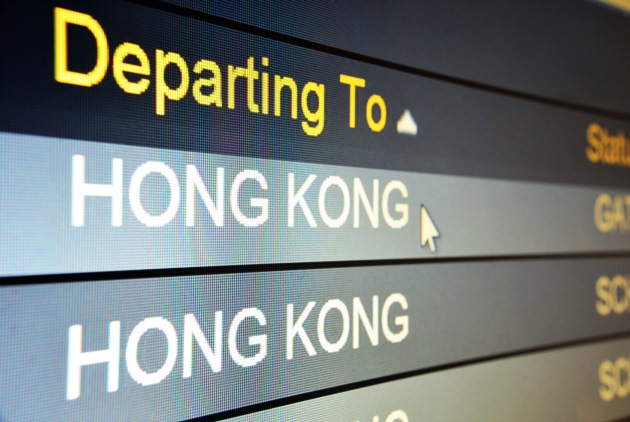The Growing Air Industry In Asia
Hong Kong-Taipei, World’s Busiest Airline Route 3 Years In A Row, Why?

Source:Shutterstock
When it comes to the world's busiest airline routes, you might be thinking of New York to Washington DC or London to Paris. However, it is the Hong Kong-Taipei route that topped the world's list for 3 consecutive years. Here are 3 reasons why.
Views
Hong Kong-Taipei, World’s Busiest Airline Route 3 Years In A Row, Why?
By Ming-Ling Hsiehweb only
In the end of October 2017, The Association of Asia Pacific Airlines (AAPA) had its 61st Assembly of Presidents held in Taipei, hosted by AAPA and China Airlines. Andrew Herdman, Director General of AAPA, pointed out in his speech that according to the data from The International Air Transport Association (IATA), the world’s most in-demand international/regional flight is Hong Kong-Taipei, with its total passenger volume exceeding 5.2 million in 2016, far ahead of the 3.4 million of its nearest rival, Jakarta-Singapore.
Though it is hard to trace back when exactly Hong Kong-Taipei became the busiest airline route in the world, it has topped the list for 3 consecutive years from 2014 to 2016, according to IATA. In September 2017, Routesonline, the world’s leading aviation network development community from the UK, also revealed that Hong Kong-Taipei, with its daily flight volume over 80 flights at an average interval around 18 minutes, leads the list of the world’s top 10 busiest airline routes of July 2017.
So why is Hong Kong-Taipei the most in-demand route?
Reason 1. Both Being Each Other’s Top 3 Favorite Traveling Places
First of all, it is the close communication between Hong Kong and Taiwan, rather than the transportation function or location, that heats up this airline route.
Chi-Chieh Chang, Senior Deputy General Manager of China Airlines, pointed out that 77% of flights in this“busiest airline route”are round-trips, with the rest being transferring flights, according to the data from IATA for the last 3 years. Near 40% of passengers transferring in Hong Kong are heading to Mainland China, while over 50% of passengers transferring in Taipei are leaving for USA or Canada.
Statistics from the Tourism Bureau of Taiwan also tell something. Though the number of Taiwanese tourists to Hong Kong has dropped a little over the past few years, Hong Kong is still the third most popular tourist destinations after Japan and Mainland China, drawing 1.9 million visitors from Taiwan in 2016. On the other hand, more and more Hongkongers are interested in traveling to Taiwan. In the same year, Taiwan had more than 1.61 million visitors from Hong Kong and Macau, with 1.39 million among them as tourists. Hong Kong and Macau have become the third biggest source of tourists in Taiwan.
Reason 2. Long-Standing Historical Bonds
Joy Yan Agatha Lee, Director of Taiwan Cathay Pacific Airways, further pointed out that this Hong Kong-Taipei route encompasses its own exclusive historical background.
Some key turning points that prospered this route include 1979, when Taiwan’s ban on travel was lifted, prompting a flood of visits to Hong Kong, and 1987, when the Taiwanese government adopted an open policy toward traveling to the Mainland, making Hong Kong the most convenient transit hub for Taiwanese travelers, and 1990, when an intertwined relationship was formed between the economies of Hong Kong, Taiwan, and the Mainland.
Reason 3. Hong Kong – Only 5 Hours Away From Major Cities Around The World
Hong Kong has always been an important transit hub.
According to Joy Yan Agatha Lee, Hong Kong connects itself to major cities that contribute nearly half the world’s population, with flights that only take 5 hours. “It is the geographical location and its broad network that draws travelers to drop by at Hong Kong,”she said. According to Cathay Pacific Airways, though the number of Hong Kong’s transferring flights to Mainland China has declined since cross-strait direct transportation was approved by the government, numbers of transferring flights to Southeast Asia, Europe, America, and Australasia from Hong Kong remain stable.
It’s also worth mentioning that IATA’s list of the world’s top 10 busiest international/regional airline routes also includes Osaka-Taipei, as 9th place, and Tokyo-Taipei, as the 10th. It seems that the skies of Taipei have been very busy. According to Chi-Chieh Chang, since the Taiwan-Japan Open Skies Arrangement started in 2012, 6 low cost carriers joined the original 9 full service carriers. Multiple budget flight options, along with tourism industry promotional strategies, prospered tourism between Taiwan and Japan, allowing both to become each other’s most traveled-to country.
“The number of visitors Taiwan sends to Japan each year is only after China and Korea,”said Chang, “while Japan has also become the second biggest source of visitors to Taiwan, only after China.”
80% Of the World’s Busiest Airline Routes Are In Asia
In the list of the world’s top 10 busiest airline routes, besides “Dublin-London” as 3rd place and “London-New York” as 7th place, all of the rest are in Asia. As Joy Yan Agatha Lee mentioned, investment in trade has flourished the development of air transportation industry, boosting travel within Asia. Moreover, changes in business strategies of airline carriers, for example, the bloom of low cost carriers, are also reshaping the air industry in Asia.
According to the latest data from IATA, she said, the estimated passenger volume of all air carriers around the world in 2036 will be 7.8 billion, which is twice the number of today, and it will be the Asia-Pacific region that contributes the most to this growth. In the next 20 years, over half of the number of the growth of passengers will be from Asia-Pacific countries.
Translated by Sharon Tseng.
Additional Reading
♦ Will Taiwan Go the Way of Hong Kong?
♦ Transit Hubs Sparking New Travel Vogue
♦ EVA Air Aims High with 'Taiwanese Quality'







